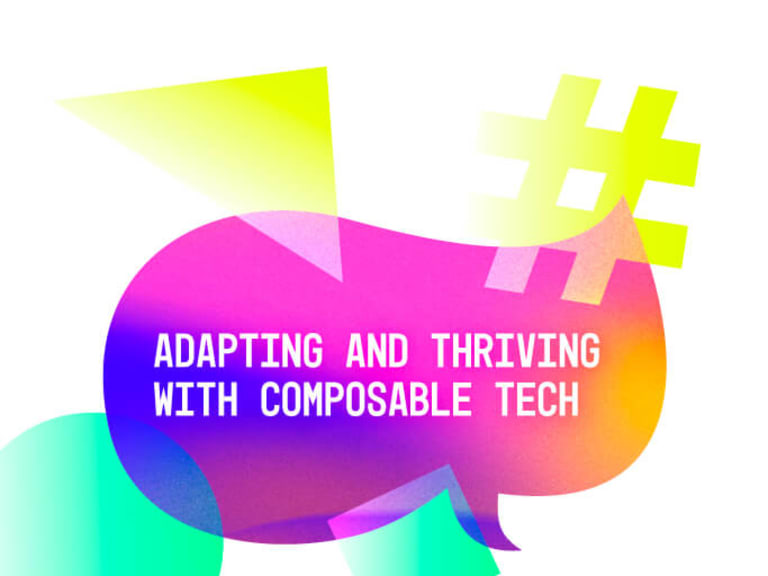
How do you create a future-proofed digital platform that will transform your customer experience and deliver unrivalled growth?

At an intimate lunch in the heart of Munich’s Tech Region at Boque auf Croque, we gathered together 30 influential leaders and disruptors to discuss how composable technologies are quickly transforming what is possible for brand customer experiences, driving revenue growth and scalability, securely and faster than ever before. This was the third event in Netlify’s exciting EMEA Composable Revolution Event Series running across Paris, London and Munich. Our goal is to bring together leaders across Europe to discuss the impact of a composable approach in e-commerce using MACH technologies.
Our expert panellists included Vanja Medakovic, Chief of Web Department at Maistra, Ralph Urmel, Senior Digital Experience Manager at Danone, Urban Pfeifer, CTO, C3 Tech Hub, PM d.o.o., and Chris Bach, Co-Founder, CSO and CCO, Netlify.
Amongst other things, the speakers shared how they have used composable technologies to create customer-centric, omnichannel experiences that have set them apart from other brands in their sector, and enabled unrivalled growth.
Here is a summary of some of the key points of the discussion.
What role does composable technology play in the differentiation of online sales?
Vanja Medakovic highlighted the benefits of consolidating multiple brands onto a single platform. “By using the same technology and sharing costs, we are able to serve a diverse range of customers, including luxury and camping brands. It’s really important to plan and invest upfront for long-term cost reduction. Maistra’s website is the primary channel for direct sales, and everyone involved, including guests, clients, and partners, is satisfied with the results.
Ralph Urmel: “Within twelve months of starting its composable journey in 2019, Danone expanded from 20 to 40 global markets and incorporated over 30 languages. We knew we needed to cater to our audiences in Japan and Germany, because these are our biggest markets. Integrating plant-based themes was critical for the brand’s meaningfulness—showing how easy it is to integrate plant-based eating into your routine—and we have seen great performance in that regard. There’s also the caveat that the pandemic gave a boost to health and healthy living, which coincided with the launch of new experiences on our website.”
What does it mean to have the flexibility to change the purpose of the web properties and digital problems without having to change the whole stack?
Urban Pfeifer gave an example of when he and his team were developing a CMS for a client who wanted to see progress in real-time. “Despite facing challenges with multiple languages and time constraints, we were able to deliver the project on time due to automated processes and flexibility. The client urgently requested to go live earlier than planned, but we still managed to achieve this without any issues, without any administration or copying databases.
Ultimately, it’s about flexibility and the ability to choose tools freely.
What are some of the challenges of adopting headless technology, taking into account buy-in from the organisation, technical debt, and exisiting systems across the board?
Ralph Urmel: “There is still a way to go in terms of education and getting people up to speed with composable. We had a workshop last week with one of our commercial IT teams. I walked them through a project for a setup, and why we made these decisions and why we opted to composable, and it was like opening up new worlds for everyone in the room. It can be challenging to get buy-in from stakeholders—I’m the only advocate in a big company and I can only do so much! But I have noticed a shift where people are much more open to talking about these technologies and learning from their experiences of it.”
Vanja Medakovic said she had to revamp Maistra’s business processes as part of the adoption of headless technology. “When purchasing technology, it is important to consider how it can address and solve your problems. It’s important to tell your story and sell your ideas, then align them with the company’s vision and goals. It’s also vital to instil motivation from stakeholders to ensure strategic investments to achieve the end goal. In the end, adopting new technology requires both agility in finding solutions and agility in the business itself in order to effectively leverage all relevant components.”
In summary, composable technology plays a significant role in the differentiation of online sales. By consolidating multiple brands onto a single platform, companies can serve a diverse range of customers while reducing costs. This approach has led to increased revenue and improved conversion rates for businesses like Maistra.
Flexibility is another key advantage, as it allows for changing the purpose of web properties and digital projects without overhauling the entire technology stack. This flexibility was demonstrated in the successful development of a CMS that enabled real-time progress tracking and an early launch for a client.
However, there are challenges in adopting headless technology, such as the need for education and buy-in from stakeholders, addressing technical debt, and integrating existing systems. Despite these challenges, the adoption of headless technology can revamp business processes and align them with company goals, requiring both agility in finding solutions and in the business itself.
Get in touch with us to learn how you can get started on your composable journey.
Next article

 PM TechHub
PM TechHub